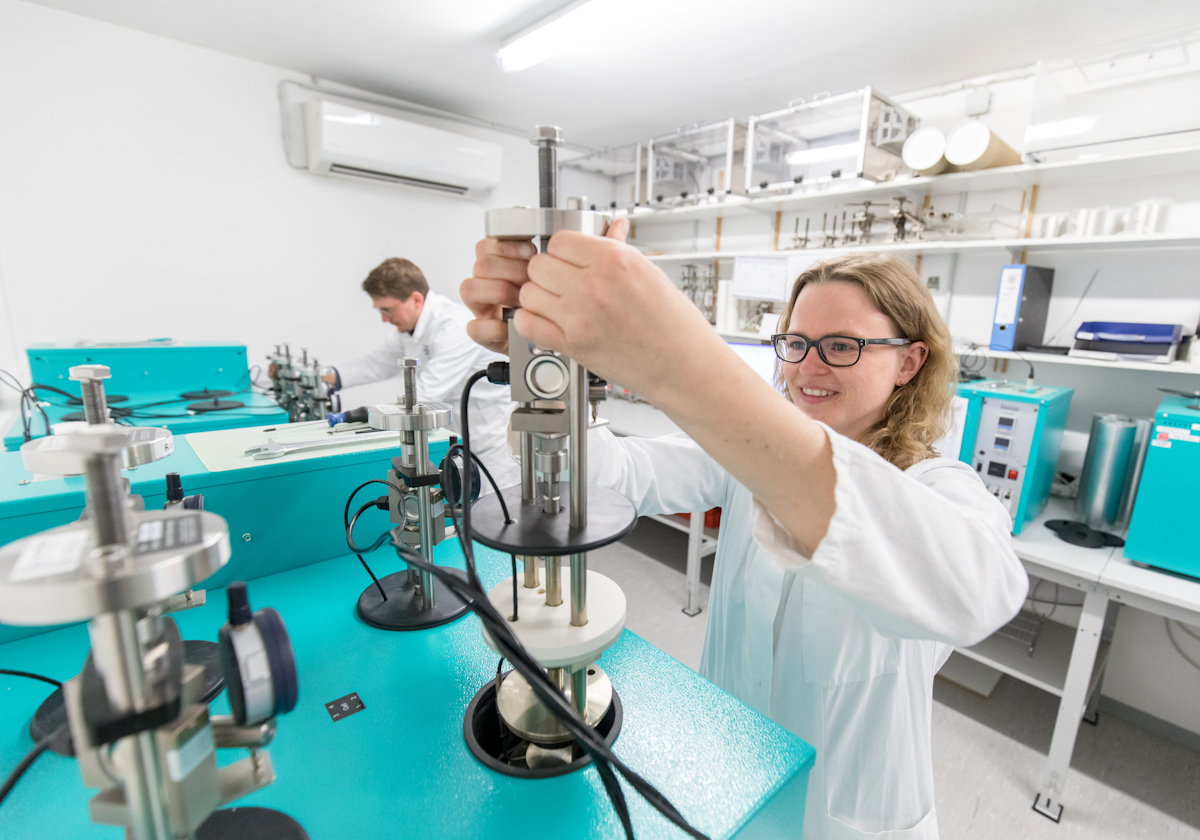Significance and Test Method
When an elastomer is compressed through external force, it generates a reaction force, sometimes referred to as the sealing force. Over time, with constant deformation, the internal tensions in the material decrease, causing the elastic restoring force of the rubber material to diminish. This reduction in sealing force is also called compressive stress relaxation (CSR).
The causes of this stress relaxation are ageing processes inside the material (=irreversible loss) as well as a temperature-dependent physical relaxation of the chain molecules until they have reached their thermodynamic state of equilibrium (=reversible loss of sealing force). Compared to the compression set test, the compressive stress relaxation test does not evaluate the recovery behaviour after relaxation, but the retention of the sealing force at constant deformation.
Significance for Application Technology
The determined compressive stress relaxation can be used to show the relaxation behaviour, i.e. the reduction of tension under load and performance potential of sealing materials. Generally, this is used to show the long-term behaviour of the material at the upper temperature limit, or a service life curve is created from it on the basis of tests at different temperatures.
The Compressive Stress Relaxation Test
(DIN) ISO 3384-1 describes two methods for determining stress relaxation under pressure. In addition, the American SAE J 2979 also defines tests for compressive stress relaxation.
An elastomer specimen is compressed with a constant load and the force it exerts against this external influence is measured. Compressive stress relaxation describes the loss of restoring force of the material and is expressed as a percentage of the initial opposing force.
This force measurement is done either continuously or discontinuously, depending on the method. The constant measurement of the restoring force is more practical and therefore most commonly used. In some cases, however, for example for examinations in media at temperatures above the boiling point, the restoring force can only be recorded at certain points in time, which means discontinuously. This requires a more complex measurement of the deformation force, but does not require such expensive testing equipment as for continuous measurement. However, the results of the different measurements correlate and are absolutely comparable.
The compressive stress relaxation test is much more complex to perform than a compression set test and is therefore less suitable for finished parts. We carry out both the continuous (normal case) and the discontinuous (special case) test.

